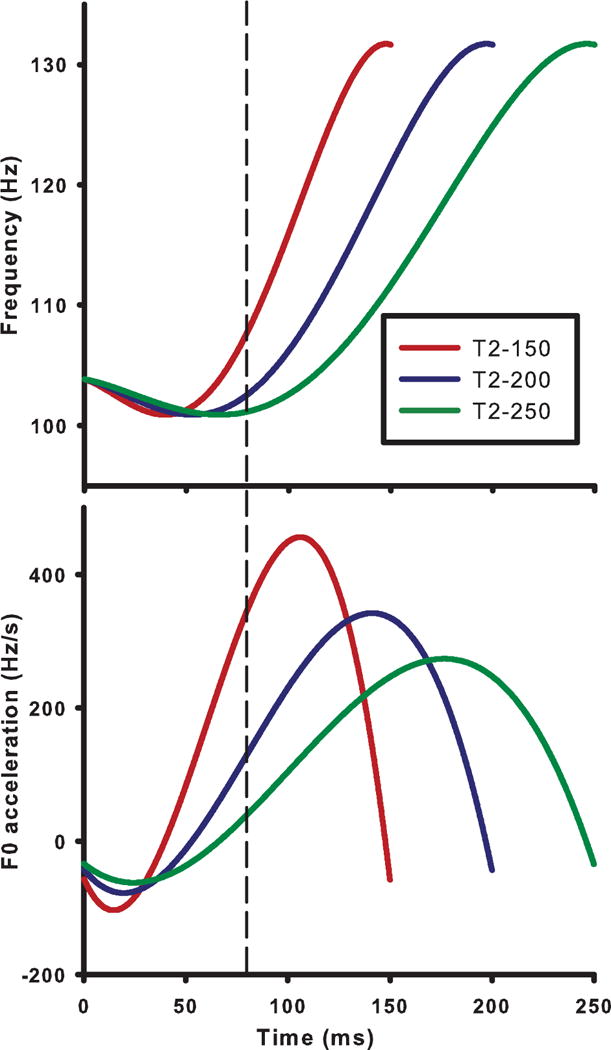Figure 1.

IRN stimuli used to evoke cortical responses to linguistic patterns that are differentiated by varying degrees of rising acceleration and duration. Voice fundamental frequency (F0) contours (top panel) and corresponding acceleration trajectories (bottom panel) of all three stimuli are modeled after the citation form of Mandarin Tone 2 (T2) using a fourth-order polynomial equation. These three stimuli exemplify short (T2_150, red), intermediate (green, T2_200), and long (blue, T2_250) variants of Tone 2. The vertical dashed line at 80 ms is located after the turning point, and provides a measure of instantaneous acceleration irrespective of stimulus duration (53, 40, and 32% of total duration for T2_150, T2_200, and T2_250, respectively).
